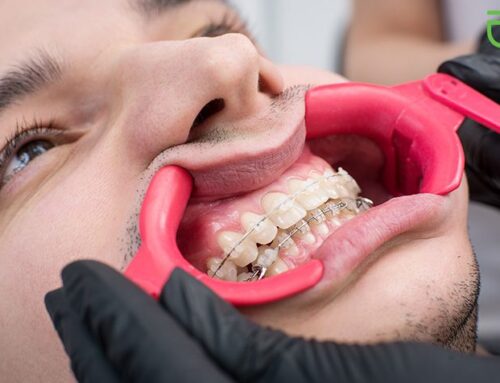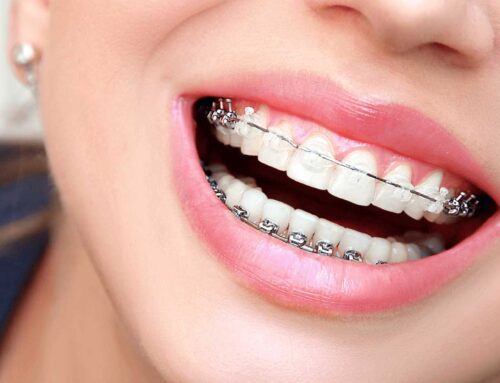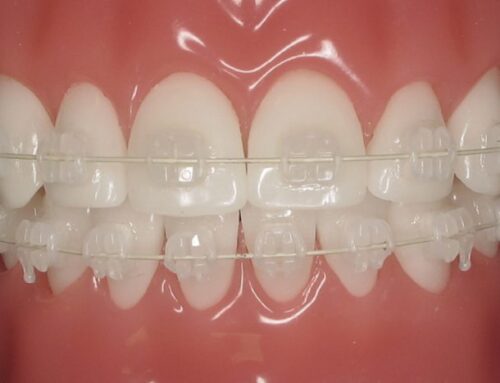Understanding the Invisalign Journey
Getting braces is a big commitment, but the end results can definitely be worth the investment. When looking at the different types of braces, many patients are immediately drawn to the Invisalign system of invisible braces, and it’s easy to see why. There are many advantages this innovative method of orthodontics has to offer. Even so, it’s still important to know how Invisalign works, and what you can expect once you commit to the process.
Keeping your smile looking great depends on keeping up with a good oral health care routine at home, sticking to the regular schedule of dental checkups, and taking care of any potential issues as soon as possible to avoid bigger problems in the future. For many people, this includes undergoing orthodontic treatment using braces to help straighten and realign crooked teeth.
There are several types of braces available that can be used to straighten teeth, but the type that many patients are now asking for by name is Invisalign. However, before the tooth straightening process can even begin, it’s essential to understand why it is so important to your dental health that you have teeth that are straight and properly aligned in the jaw. Let’s take a moment to explore these reasons, and how they relate to your long-term state of health and well-being.
Why Is It Important to Have Straight, Aligned Teeth?
The first thing that usually comes to mind when people consider the reasons for needing braces is the visible effects that misaligned teeth can have on our outward appearance. Being happy with the look of your smile can go a long way to boosting self-confidence and increasing overall comfort in many types of social situations. While this is certainly a common reason why people wish to move ahead with braces, the physical appearance improvements are just one of the many factors contributing to the need for tooth realignment. In fact, the medical benefits of straighter teeth are often far more substantial than the cosmetic ones.
Crooked and misaligned teeth negatively impact the consistency of a person’s bite pattern, which has the potential of leading to a wide range of long-term dental health issues if left untreated. Some of the most common problems that are known to develop due to misaligned teeth include tooth grinding, tooth clenching, and premature wearing of tooth enamel in certain areas.
In addition, teeth that are crowded too close together can make it more difficult to effectively perform daily tooth cleaning habits like brushing and flossing. This increases the risks of tooth decay and associated problems like gum disease, bad breath, and bacterial infections. Other problems that can arise due to misaligned teeth include such conditions as sleep apnea, chronic headaches, difficulty in chewing, and speech impediments.
With all these reasons in mind, it’s easy to see why braces are so common among teens and young adults, as dealing with these risks early on helps set the stage for a good state of dental health throughout life. It should be noted that braces aren’t limited to just the young. Orthodontic treatment can be performed at virtually any age, and many adults choose to move forward with braces to correct tooth alignment issues and improve their dental health.
What is the Difference Between Invisalign and Other Types of Braces?
Although traditional metal braces are the style that we most often think of when we hear the word ‘braces’, it may surprise you to learn that there are actually multiple different types of orthodontics to choose from, each with their own unique advantages and features. Invisalign is set apart from all the rest in many important ways, but let’s take a quick look at the other types of braces as well to gain a clear understanding of the key differences.
Metal Braces – The most common style of braces, metal braces consist of three main components; metal brackets affixed to each individual tooth, a metal arch-wire that runs through each metal bracket spanning the outer perimeter of the teeth, and stretchy elastic ligatures that hold the wire in place on the brackets. These elastic ligatures are often available in multiple colors, allowing the patient to add a little personality and style to their braces by choosing their own color combinations.
Ceramic Braces – Very similar in design to metal braces, ceramic braces offer patients a more subtle appearance by using composite materials in the construction of the brackets. Ceramic brackets can be made to appear white, tooth-coloured, or even transparent. The ligatures used can also be selected from clear, white, or tooth-shades to make the braces even less noticeable.
Fast Braces – At first glance you’d never really know there was anything different about fast braces compared to regular metal braces. But, in order to accelerate the process of tooth movement in the jaw, fast braces utilize advanced bracket designs and arch-wires that can move teeth in multiple directions and orientations simultaneously. Furthermore, fast braces are combined with sessions of phototherapy and subsonic wave therapy to increase the comfort level for the patient in between adjustments and reduce the total time needed for the teeth to reach their final ideal positions in the jaw.
Invisalign Invisible Braces – Unlike the other types of braces that consist of multiple components, the Invisalign system uses a series of single-piece clear plastic aligners. Each aligner, one for the top arch and one for the bottom arch, fits snugly overtop of the teeth and is virtually invisible thanks to the perfectly transparent material used in their manufacture. The low-profile design of the aligners are very comfortable, with many patients testifying that they’ve occasionally forgotten they were wearing them. Plus, Invisalign aligners have the added advantage of being removable. This means they can quickly be taken off and put back on by the patient at any time, adding to the convenience and comfort when eating or performing your regular tooth cleaning routine.
Now, you might think that the actual mechanics behind how each of these different styles work to move the teeth would be as different as the design of the braces themselves. However, this is actually not the case. In simplest terms, all braces work by exerting pressure on the teeth in a precise pattern over a period of time. Eventually, this pressure gradually reorients the teeth in the jaw and guides them to their ideal positions to correct the misalignment and provide a more ideal bite pattern.
How Will I Know If Invisalign Braces Will Work for Me?
Even though all braces work using the same basic principles of pressure and time to move and reposition teeth, there are some cases where certain types of braces are more effective than others. For example, sometimes teeth
emerge in the jaw in locations that are far outside of the normal position they should be in. In cases like these, it is often necessary to relocate these severely displaced teeth into positions closer to where they should have erupted before the rest of the teeth can be realigned. To do this, it may require surgery, or perhaps an initial orthodontic correction using metal brackets, wires, and headgear. Once this initial adjustment has been completed, the remaining teeth can then be corrected using a different type of braces.
In general, for patients requiring mid to minor levels of orthodontic correction, Invisalign is a perfectly viable option. For patients requiring more dramatic shifts and repositioning of the teeth, other types of braces will likely be recommended. In any case, your dentist or orthodontist will conduct a thorough examination and provide a complete detailed treatment plan for you. You’ll be fully informed on exactly what kind of braces will work best for your teeth, and what the sequence of treatment will look like to achieve your goals.
What Happens at the Beginning of Invisalign Orthodontic Treatment?
At the very beginning of the treatment, exact measurements of the patient’s mouth and teeth are obtained using an advanced dental imaging system. At Georgian Dental, we use the iTero Element 5D digital imaging system. This innovative device allows us to capture high-resolution scans of the patient’s entire mouth and recreates it digitally with a 3D virtual model. Using this digital recreation, the system can provide all the data needed to craft the Invisalign aligners that will be used to perform the treatment.
Another feature of the iTero Element 5D is its ability to provide a look into the future for the patient using predictive software to generate ‘before and after’ representations of the teeth. In just moments, you’ll be able to see an accurate representation of how your smile will change after the treatment is completed. It’s absolutely fascinating to see the amazing difference that Invisalign can make! After this step, the aligners will be manufactured and then provided to the patient when they are ready to wear.
How Do Invisalign Aligners Work Compared to Other Braces?
Traditional metal braces, ceramic braces, and fast braces all rely on the shape of the arch-wires to put pressure on the brackets attached to the teeth to guide them in the right direction. However, each arch-wire is only able to move the teeth so far before they must be replaced with new ones. This adjustment process usually occurs about once a month. During your monthly adjustment appointments, the old arch-wire is removed and the next arch-wire in the sequence is attached to the brackets. With Invisalign clear plastic aligners, this process is different.
Instead of having monthly adjustments where the arch-wires are changed, Invisalign aligners are replaced by the patient about every 2 weeks with the next set of aligners in the sequence. The shape of these aligners follows a gradual evolution, exerting slight but constant pressure on the teeth while they are worn. The first set of aligners begins with a slight alteration from the way the patient’s teeth are at the start of the treatment. Each new set incrementally moves the teeth closer and closer to the desired final position.
What Happens after the Last Set of Aligners Has Been Worn?
Once the last set of aligners has been worn for about 2 weeks, the orthodontic treatment has reached its end. You’ll have a final checkup with your dentist or orthodontist to conduct a thorough examination of the results. At this time, you’ll likely be fitted for a retainer, which is usually worn when sleeping.
Retainers are an important part of all types of orthodontic treatment, not just Invisalign, as they help prevent the teeth from gradually shifting out of position over time. This gradual drift occurs naturally as we age, and unfortunately can undo some of the realignment that was performed. With a retainer, you need not worry about this, as wearing it will reinforce the correct alignment of the teeth each night and prevent any gradual tooth shifting.
At each of your regular dental checkups, your dentist will continue to monitor the position and orientation of your teeth to keep an eye on things. Preventive dental treatments like regular cleanings and fluoride protection are always beneficial, so it’s wise to be diligent in keeping up with the recommended schedule of dentist visits.
Get Started Down the Path to Straighter Teeth with Invisalign Braces Today!
If misalignments of your teeth are causing you to be dissatisfied with your smile, now is the time to have a conversation with your dentist about the benefits of orthodontic treatment using Invisalign. Getting straighter teeth has never been easier thanks to this comfortable and innovative orthodontic treatment, and we’ve already helped countless patients achieve their goals of a better looking smile.
Get in touch with the team here at Georgian Dental to arrange for your no-obligation consultation and find out if Invisalign is right for you. We look forward to speaking with you!
Appointment Request
If you’re interested in any of our procedures, and would like to meet with one of our dentists to discuss options, costs and get additional information, complete this short form and we’ll give you a call to arrange for a no-obligation appointment at our Barrie clinic.










